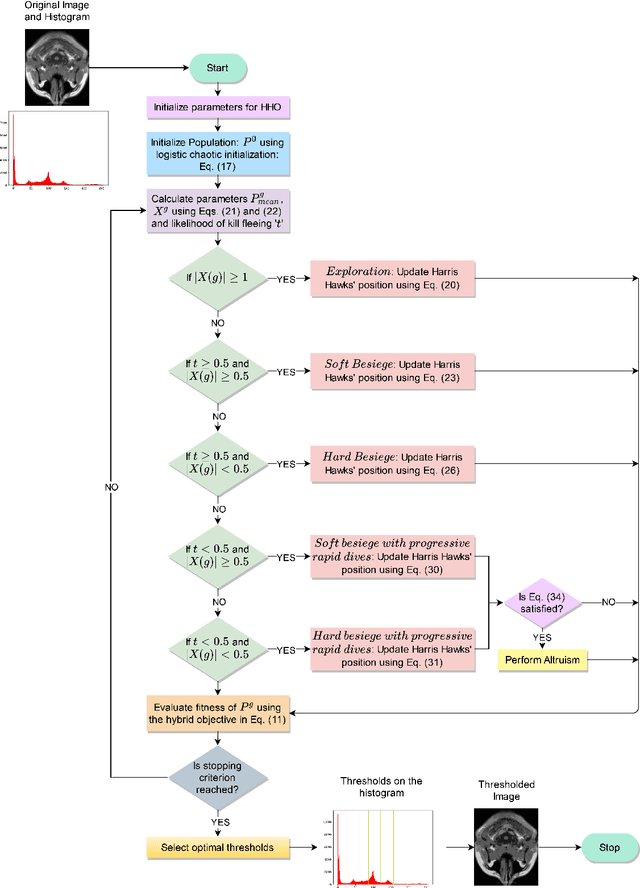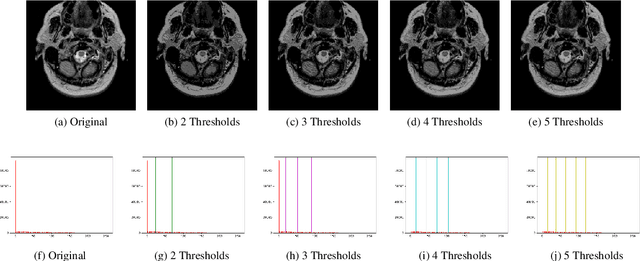Rajarshi Bandyopadhyay
Segmentation of Brain MRI using an Altruistic Harris Hawks' Optimization algorithm
Sep 17, 2021



Abstract:Segmentation is an essential requirement in medicine when digital images are used in illness diagnosis, especially, in posterior tasks as analysis and disease identification. An efficient segmentation of brain Magnetic Resonance Images (MRIs) is of prime concern to radiologists due to their poor illumination and other conditions related to de acquisition of the images. Thresholding is a popular method for segmentation that uses the histogram of an image to label different homogeneous groups of pixels into different classes. However, the computational cost increases exponentially according to the number of thresholds. In this paper, we perform the multi-level thresholding using an evolutionary metaheuristic. It is an improved version of the Harris Hawks Optimization (HHO) algorithm that combines the chaotic initialization and the concept of altruism. Further, for fitness assignment, we use a hybrid objective function where along with the cross-entropy minimization, we apply a new entropy function, and leverage weights to the two objective functions to form a new hybrid approach. The HHO was originally designed to solve numerical optimization problems. Earlier, the statistical results and comparisons have demonstrated that the HHO provides very promising results compared with well-established metaheuristic techniques. In this article, the altruism has been incorporated into the HHO algorithm to enhance its exploitation capabilities. We evaluate the proposed method over 10 benchmark images from the WBA database of the Harvard Medical School and 8 benchmark images from the Brainweb dataset using some standard evaluation metrics.
 Add to Chrome
Add to Chrome Add to Firefox
Add to Firefox Add to Edge
Add to Edge